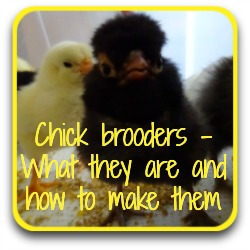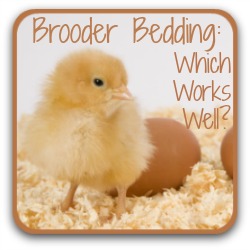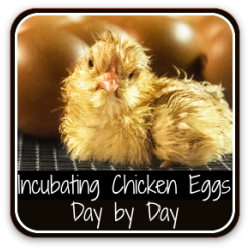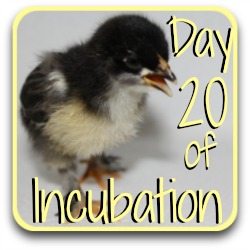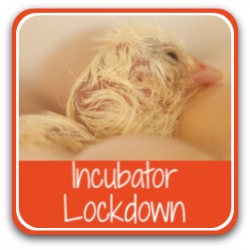- Home
- Incubation day by day
- Day 19
Stages of chicken eggs hatching: day 19 in the incubator.
We're at the very last stages of incubation. The three days between now and hatching are critical to the chick's survival.
There's very little left for us to do in these last stages of chicken eggs hatching. It's more or less all waiting time.
So we're going to start preparing for those chicks to make sure they will have a good start to life in the brooder.
What's going on in the egg at day 19?
- The yolk contines to be taken into the body, so the chick now fills most of the egg.
- The chick has been slowly turning so that its head is close to the blunt end of the egg and the beak, usually tucked under one wing, comes to rest against the internal membrane.
- Once this manoeuvre is complete, the chick is in the right place for hatching.

Stages of chicken egg hatching: what's happening to the chick?
- The chick's head is now at the blunt end of the egg. Over the next couple of days, it will turn to face the outer shell, ready to "pip" through the internal membrane just before hatch.
- By the end of day 19, the chick's intestines will be completely enclosed within the body.
- The chick is almost completely developed now. The remaining growth relates to the yolk sac, which must be absorbed into the body completely before hatch. At day 19, the yolk is about half absorbed.
Please note: the image below is a commissioned piece and is subject to international copyright laws. I am the sole copyright owner.
It must not be used, copied or reproduced anywhere without my permission.
Contact me for details and permissions for this and all other images on this page.

- The yolk sac, or 'vitellus', contains a complex system of major blood vessels. If the yolk sac is not fully absorbed into the body then neither are the blood vessels.
- Trying to 'help' the chick out of the egg too early can cause those blood vessels to rupture and the chick to die.
- We'll cover more about 'assisted hatching' later in this series.
Candling chicken eggs, day 19: don't do it!
No candling today, please!
I candled the egg in the photo below only for demonstration. It's really not possible to see anything now, apart from the air cell. The rest of the egg is chick – and it's not possible to see any detail even with a very powerful candler.
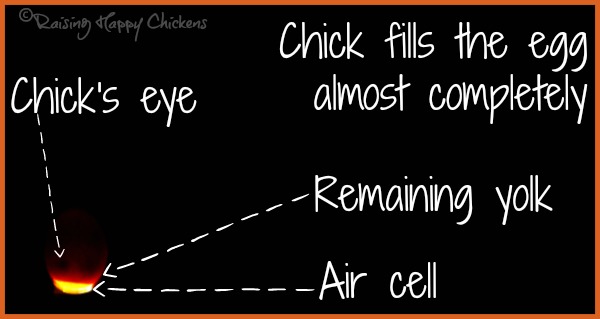
It's very important that the egg is not candled between now and hatch.
The chick needs to get its beak into the right position so that in a couple of days' time it can "pip" (break through) into the air cell.
Candling runs the risk of preventing the chick from moving into position. It's not absolutely written in stone that moving the egg will cause the chick's death – the egg in the photo above hatched without a problem – but it's a risk.
In my view, it's a risk too far. Leave the eggs alone!
Stages of chicken eggs hatching: what can we do today?
- The usual checks of temperature and humidity still need doing. Remember, humidity levels at this stage should be at 65%.
- Eggs should not be turned. They should remain lying flat on the incubator floor, on a non-slip surface.
- The important tasks at this stage should be checking we have a safe environment for our chicks when they hatch.
It's not difficult. A chick has simple needs.
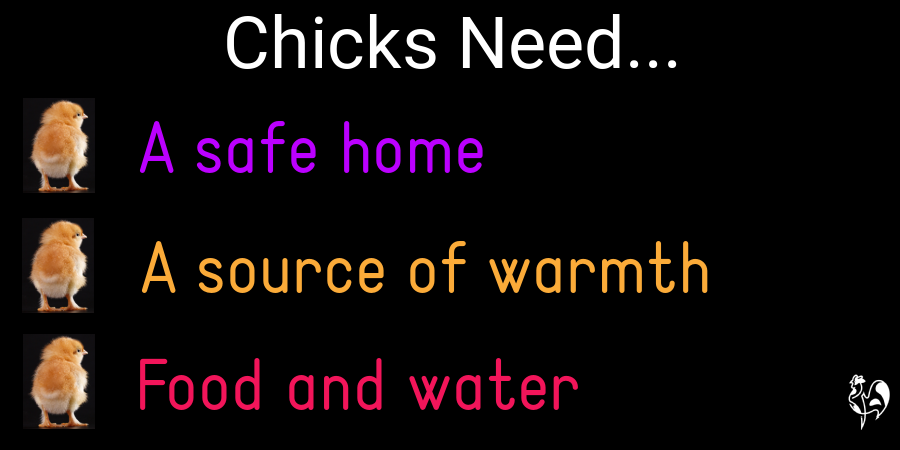
Stages of chicken eggs hatching: question of the day.
What is a chicken brooder?
Today we'll deal with the first of these: a safe home.
- A brooder for your chicks is simple and inexpensive to make
- Choosing appropriate bedding will keep your chicks safe.
- The button links below will take you to helpful articles.
Can anything go wrong at this stage?
- This stage, just before the chicken eggs hatch is a vulnerable one. The chick needs to keep growing and at the same time position herself properly for hatch.
- Any failures in cleanliness will have consequences now. Most late deaths during incubation are the result of bacteria entering the egg.
- The shell is very porous, having given a lot of calcium to the chick, and in recent days it has been actively involved in exchanging gases between the chick and the outside world. So it's very vulnerable to taking in external bacteria: from your hands, from the incubator, from your candler.
- If you've started off with a sterilised incubator and clean eggs, kept everything hygienic in the incubation process, your eggs at lockdown were well developed, and you used a good quality, medicated hand sanitiser (this is an affiliate link which means that if you click the link and buy a product, I earn a small commission), then your chances of a successful hatch are good.
- The egg I candled above at day 19 resulted in this lovely Welsummer chick because I was scrupulously aware of the need for good hygiene.
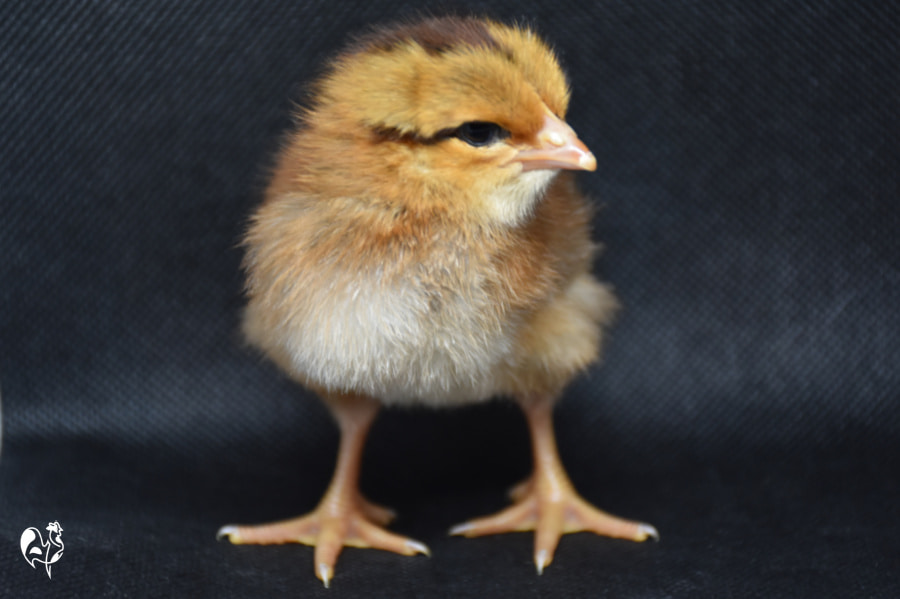
More articles about the stages of chicken eggs hatching.
Choose one of these button links to go back to the start of the incubation process, to return to yesterday's information, or to move forward to tomorrow, day 20.
Other related pages you may find useful.
Sources.
A lot of "facts" you'll find on the internet are often people's individual views, based on inaccurate information repeated from poor quality sources.
The information I provide in this article and others is based on both my own experience of incubating and hatching chicken eggs every year for over 13 years, but on evidenced facts from scientific, peer-reviewed research and books from highly respected and experienced poultry keepers such as Gail Damerow.
Some of the trusted sources I have used in this article are these.
Avitronics: Heart Rates. Pub. Avian ID, 2020.
Damerow, Gail: Hatching and Brooding Your Own Chicks. Pub. Storey, 2013. See my review, here.
Hamburger, V and Hamilton, H L: A series of normal stages in the development of the chick embryo. Pub. Journal of Morphology, 1951.
Romanini, C.E.B., et al: Monitoring the hatch time of individual chicken embryos. Pub. Journal of Poultry Science, 2013.
Wu et al: Egg fertility and reduced egg fertility, hatching success, and larval survival. Pub. Science Direct, 2003.
Yalcin, W., et al: Incubation Temperature and Lighting: Effect on Embryonic Development, Post-Hatch Growth, and Adaptive Response. Pub. Frontiers in Physiology, 2022.
- Home
- Incubation day by day
- Day 19
